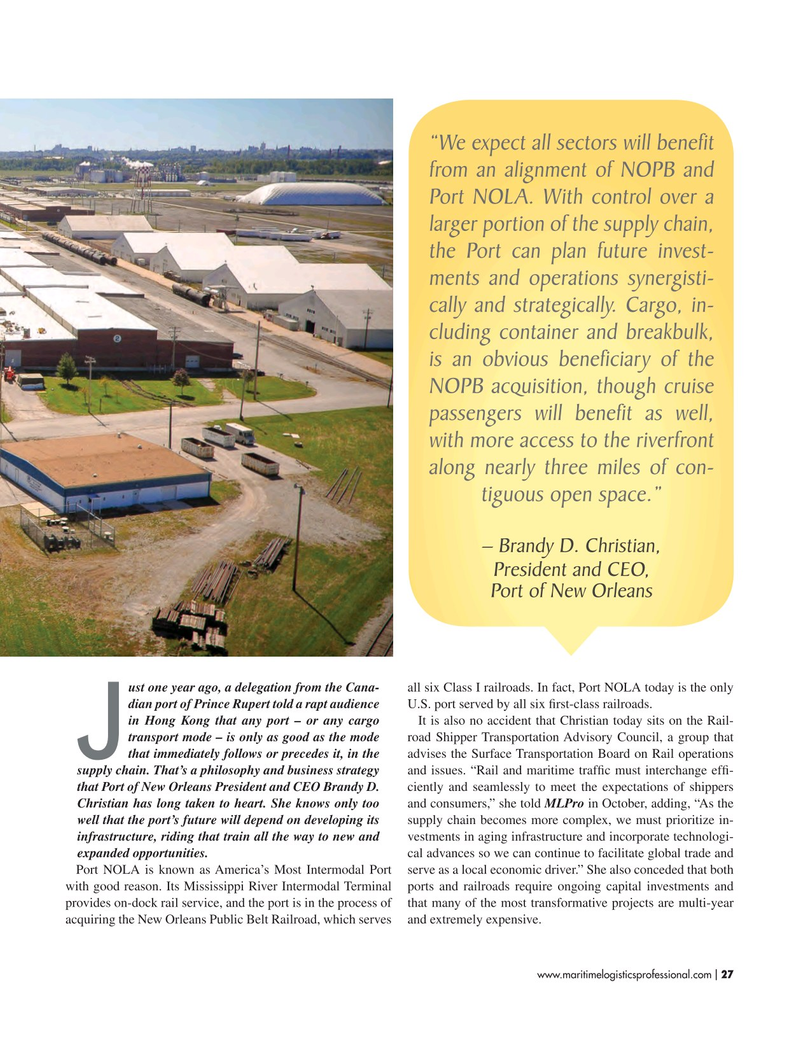
Page 27: of Maritime Logistics Professional Magazine (Sep/Oct 2017)
CONTAINER PORTS
Read this page in Pdf, Flash or Html5 edition of Sep/Oct 2017 Maritime Logistics Professional Magazine
“We expect all sectors will beneft from an alignment of NOPB and
Port NOLA. With control over a larger portion of the supply chain, the Port can plan future invest- ments and operations synergisti- cally and strategically. Cargo, in- cluding container and breakbulk, is an obvious benefciary of the
NOPB acquisition, though cruise passengers will beneft as well, with more access to the riverfront along nearly three miles of con- tiguous open space.” – Brandy D. Christian,
President and CEO,
Port of New Orleans ust one year ago, a delegation from the Cana- all six Class I railroads. In fact, Port NOLA today is the only dian port of Prince Rupert told a rapt audience U.S. port served by all six frst-class railroads. in Hong K ong that any port – or any cargo It is also no accident that Christian today sits on the Rail- transport mode – is only as good as the mode road Shipper Transportation Advisory Council, a group that
J that immediately follows or precedes it, in the advises the Surface Transportation Board on Rail operations supply c hain. That’s a philosophy and business strategy and issues. “Rail and maritime traffc must interchange eff- that P ort of New Orleans President and CEO Brandy D. ciently and seamlessly to meet the expectations of shippers
Christian has long taken to heart. She knows only too and consumers,” she told MLPro in October, adding, “As the well that the port’s future will depend on developing its supply chain becomes more complex, we must prioritize in- infrastructure, riding that train all the way to new and vestments in aging infrastructure and incorporate technologi- expanded opportunities. cal advances so we can continue to facilitate global trade and
Port NOLA is known as America’s Most Intermodal Port serve as a local economic driver.” She also conceded that both with good reason. Its Mississippi River Intermodal Terminal ports and railroads require ongoing capital investments and provides on-dock rail service, and the port is in the process of that many of the most transformative projects are multi-year acquiring the New Orleans Public Belt Railroad, which serves and extremely expensive. www.maritimelogisticsprofessional.com 27
I

 26
26

 28
28
